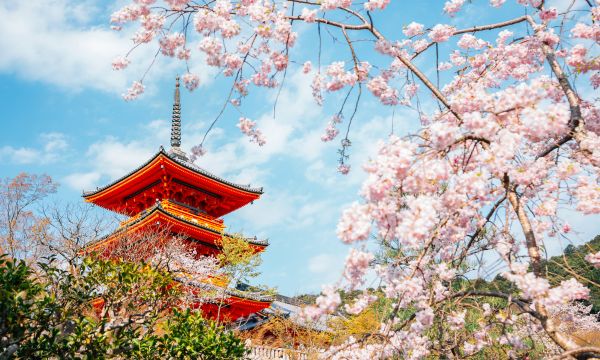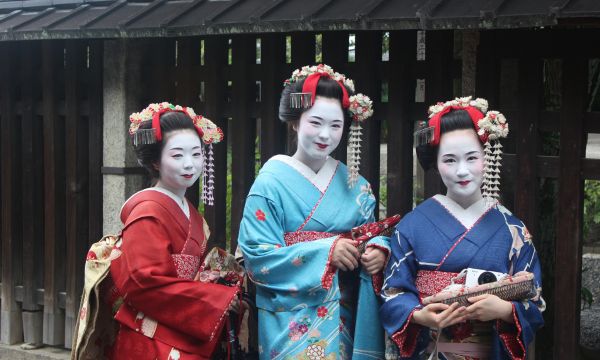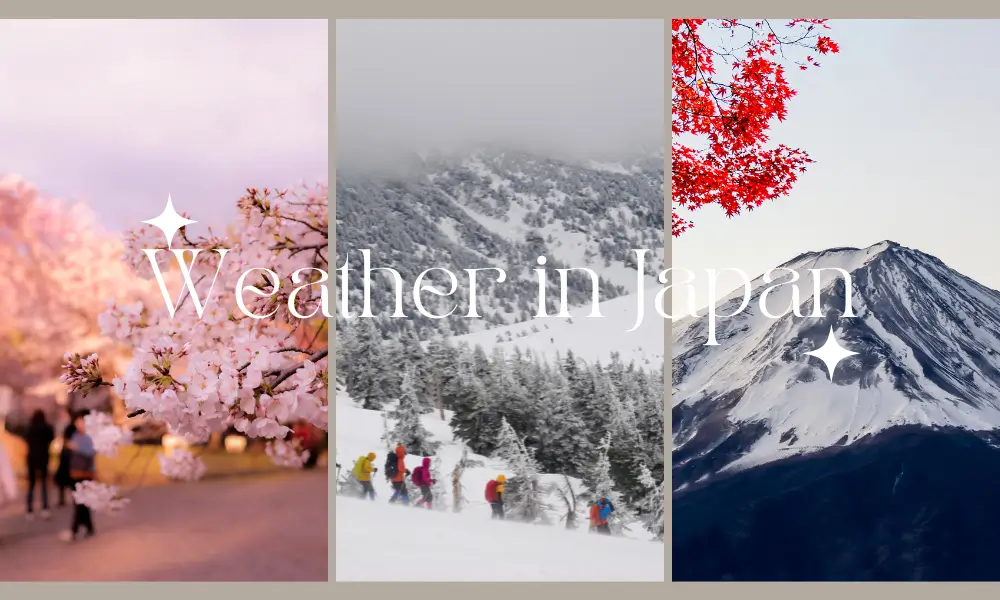Show the relevant content
Toggle- Introduction:
- Why Japan’s Traditional Dress Matters
- Confusion About What to Wear
- What Happens When You Don’t Know the Rules
- A Simple Guide to Japanese Traditional Dress
- History of Japan’s Traditional Dress
- Key Garments and Accessories
- Materials, Care, and Maintenance
- Case Studies: Real Experiences
- Tips for First-Time Wearers
- Layers in Traditional Dress
- What’s Inside a Kimono Rental Set?
- Wearing a Kimono as a Foreigner
- Religious and Formal Context
- Kimono in Pop Culture and Media
- Final Tips for Wearing a Kimono Comfortably
- Conclusion:
Introduction:
When people think of Japan, one image often comes to mind: someone wearing a kimono. But ask most travellers what the difference is between a kimono, yukata, or hakama, and they usually aren’t sure. And that’s a problem, because traditional Japanese clothing is deeply tied to culture, season, and occasion in Japan’s Traditional Dress.
If you’re planning to visit Japan, attend a local festival, or participate in a tea ceremony, wearing the wrong outfit (or wearing it incorrectly) can lead to confusion—or even embarrassment. For example, wearing a summer yukata in winter isn’t just uncomfortable; it’s also inappropriate for the season. Tying the kimono the wrong way? That can send the wrong message altogether.
But you don’t need to be an expert or born in Japan to get it right.
This blog post will explain everything you need to know about Japanese traditional dress—from the meaning behind each garment to when and where to wear it. We’ll break it down in a way that’s easy to understand, with real-world examples, facts, and tips to help you avoid common mistakes. You’ll learn about kimono, yukata, hakama, obi belts, and more—plus how they’ve evolved and how to wear them with confidence.
Whether you’re just curious or planning to rent one for your Japan trip, this guide will help you understand how to dress appropriately, respectfully, and comfortably—and enjoy the experience even more.

Why Japan’s Traditional Dress Matters
Many visitors and learners hear words like “kimono” and “yukata” but have no clear idea of how they differ, when to wear them, or what rules to follow. Without guidance, you might choose the wrong outfit for a festival, feel out of place at a tea ceremony, or damage a precious garment. This guide breaks down everything—history, types, occasions, materials, case studies, and tips—in simple, clear language. By the end, you’ll understand how to wear Japan’s traditional dress with confidence.
Confusion About What to Wear
Japan’s traditional dress comes in a variety of styles. Even Japanese people sometimes mix up terms:
- Kimono means “thing to wear,” but it covers many outfits.
- Yukata resembles a light kimono but is typically worn in summer.
- Hakama are wide pants or skirts worn over a kimono.
Without clear facts, a first-time wearer may pick a summer yukata for a winter wedding—and look out of place.
What Happens When You Don’t Know the Rules
Imagine this scenario:
You arrive at a New Year’s shrine visit wearing a blue cotton yukata. The cold wind bites through the thin fabric. You see others in heavy silk kimonos with fur stoles. You feel cold and embarrassed.
Alternatively, you can rent a hakama for a graduation ceremony, but leave the obi (sash) a bit too loose. Your outfit slips as you walk. You spend more time fixing your clothing than enjoying the event.
A Simple Guide to Japanese Traditional Dress
This guide uses clear steps and real examples to help you:
- Recognise different garments
- Choose the right outfit for the occasion.
- Understand materials and care.
- Find places to buy or rent.
- Follow simple tips for comfort and style.
Let’s begin.
History of Japan’s Traditional Dress
- Heian period (794–1185): Early kimono styles evolved from Chinese robes.
- Edo period (1603–1868): The kimono as we know it took shape. Colors and patterns indicated rank and season.
- Meiji period (1868–1912): Western clothes arrived. The traditional dress became ceremonial.
- Today, The kimono is designated as UNESCO’s Intangible Cultural Heritage (2014). Yukata is popular at summer festivals.
Key Garments and Accessories
1. Kimono
- Definition: Long robe with wide sleeves, wrapped left over right.
- Seasons: Silk kimono for spring/fall; lined for winter.
- Cost: A new silk kimono can cost ₤1,000–₤5,000 (€1,200–€6,000). Rental from ¥3,000–¥10,000 per day.
- Case: A Tokyo geisha in 2024 wore a 12-layer jūnihitoe, costing over ¥1,000,000 per set.
2. Yukata
- Definition: Unlined cotton kimono, casual.
- When: Summer festivals (matsuri), fireworks show.
- Cost: ¥3,000–¥8,000 new; rental ¥2,000–¥5,000.
- Tip: Always wear a koshi-himo (waist cord) under the obi to keep it in place.
3. Obi (Sash)
- Types:
- Nagoya-obi: Easy for beginners.
- Fukuro-obi: Fancy, used for a formal kimono.
- Width: 15–30 cm; tied in decorative knots.
- Cost: ¥5,000–¥20,000.
- Care: Store flat or rolled; avoid creases.
4. Hakama
- Definition: Pleated pants or skirts worn over a kimono.
- Use: Martial arts, graduation, weddings.
- Case: University graduates in 2023 often wore hakama in navy or black.
5. Haori
- Definition: Hip-length coat worn over a kimono.
- When: Cooler weather or for formality.
- Detail: Fastened by haori-him cords.
Materials, Care, and Maintenance
- Silk: Luxurious but needs dry cleaning.
- Cotton: Easy to wash at home.
- Synthetic: Cheaper for beginners.
Storage Tips:
- Keep garments in kimono boxes or wrapped in furoshiki cloth.
- Avoid direct sunlight to prevent fading.
- Air out the kimono monthly to prevent mould.
Modern Use and Revival
- Rentals: Over 500 kimono-rental shops in Kyoto (2024 data).
- Fashion fusion: Designers mix kimono fabrics into modern dresses.
- Pop culture: Anime events often feature Yukata cosplay.
Case Studies: Real Experiences
Tourist Kimono Rental in Kyoto
- Background: Emma (USA) rented a kimono for ¥4,000/day.
- Outcome: She walked through Gion, took photos at Yasaka Shrine, and felt part of local culture.
- Lesson: Booking and asking the staff to tie the obi can save time.
Family Celebration: Shichi-Go-San Festival
- Background: A Tokyo family dressed their 3-year-old and 7-year-old daughters in kimonos.
- Outcome: Professional photos and shrine blessings. They rented from a local shop for ¥6,500.
- Lesson: Children’s kimonos cost less but require extra pins and cords for safety.
How to Buy or Rent Traditional Dress
Buying:
- Department stores in Ginza, Tokyo (e.g., Mitsukoshi).
- Specialty shops like Yamatoku (Kyoto).
Renting:
- Online booking platforms (e.g., Kyoto Kimono Rental Wargo).
Tips for First-Time Wearers
- Practice walking at home in your shoes and kimono.
- Use a mirror to adjust obi knots.
- Carry a small bag (purse) rather than a large one.
- Ask staff to help you undress—a kimono can be tricky.
- Wear tabi socks to fit traditional footwear (zōri or geta).
Seasonal and Cultural Meanings
Colour and Pattern Symbolism:
- Spring: Cherry blossom motifs, light pinks, greens
- Summer: Water streams, fans, dragonflies
- Autumn: Maple leaves, deep reds, oranges
- Winter: Bamboo, cranes, snowflakes, deep blues
Case Study: In Kyoto’s 2023 Gion Matsuri, many locals wore yukata with fireworks or fish motifs to reflect the summer celebration.
Layers in Traditional Dress
Many traditional outfits are layered. For example, a formal kimono can have:
- Nagajuban (inner lining to protect the outer kimono)
- Main kimono robe
- Obi sash and accessories (obiage, obijime)
- Haori or shawl (optional for warmth or modesty)
What’s Inside a Kimono Rental Set?
When you rent a kimono in Japan, you usually get:
- Kimono or yukata
- Obi (belt)
- Undergarments
- Tabi (socks)
- Zōri (sandals)
- Hair accessories (for women)
- Small bag or purse
Optional add-ons: Hairstyling, photo packages, seasonal discounts
Wearing a Kimono as a Foreigner
Many visitors worry about whether it’s okay to wear traditional Japanese clothing. The answer is:
Yes—it’s welcome.
Locals often appreciate when tourists show respect and interest in Japanese culture. Just follow basic manners:
- Wear it properly (left side over right)
- Treat the garments with care.
- Avoid wearing sacred items (like a white mourning kimono)
Example: In 2024, a local shrine in Tokyo offered free kimono rentals for international guests as part of a cultural exchange program.
Religious and Formal Context
Some traditional clothing is linked to religious or ceremonial use:
- Shinto weddings: White kimono (shiromuku) with headpiece
- Coming-of-age ceremonies: Colorful furisode for 20-year-olds
- Funerals: Plain black kimono with white obi
Wearing these types is best left to formal events or with guidance from hosts or rental staff.
Kimono in Pop Culture and Media
Traditional Japanese dress appears in:
- Anime and manga: Characters like Nezuko from Demon Slayer wear yukata or a kimono
- Video games: Titles like Animal Crossing and Ghost of Tsushima feature kimono options
- TV dramas: Period shows (jidaigeki) use completely traditional outfits
As a result, more young Japanese are re-embracing traditional clothing as both a fashion statement and a means of expressing their identity.
The Revival of Kimono Culture in Japan
In recent years:
- Fashion brands have reused kimono fabric for modern clothes
- Kimono schools have opened in Tokyo and Osaka.
- Foreigners can now attend workshops to learn how to dress themselves.
Final Tips for Wearing a Kimono Comfortably
- Don’t over-tighten the obi – breathing is essential.
- Watch your posture – walking upright keeps the kimono in place.
- Avoid eating messy foods while wearing expensive rentals.
- Bring tissues or a fan – some outfits can feel warm.
- Respect cultural space, especially at shrines or events
Conclusion:
Japan’s traditional dress is more than clothing. It tells stories. It shows identity. It honours the past. From everyday yukata to formal kimono and hakama, these garments help you feel more connected to Japan.
Whether you’re visiting for fun, photos, or learning, wearing a kimono the right way shows respect and opens doors. People smile at you. Locals strike up conversations. You become part of the scene, not just a viewer.
So don’t worry about getting everything perfect. Start with basic knowledge, ask for help when needed, and enjoy the process. Japanese culture welcomes learners with open arms and open hearts.
Wear it with care. Wear it with joy. And wear it proudly.
FAQs,
Q1: What’s the difference between a kimono and a yukata?
A: Yukata is a casual cotton garment worn in summer. A kimono is typically formal, made of silk, and lined in winter.
Q2: How much does it cost to rent a kimono in Kyoto?
A: Standard kimono rentals start around ¥4,000 per day, including obi and basic accessories.
Q3: Can I wash a kimono at home?
A: No. The silk kimono needs professional dry cleaning. Cotton yukata can be hand-washed gently.
Q4: When should I wear a hakama?
A: At graduation ceremonies, weddings, and martial arts events, often over a kimono.
Q5: How do I store the kimono to prevent damage?
A: Wrap in furoshiki cloth, place in kimono boxes, avoid sunlight, and air out monthly.














